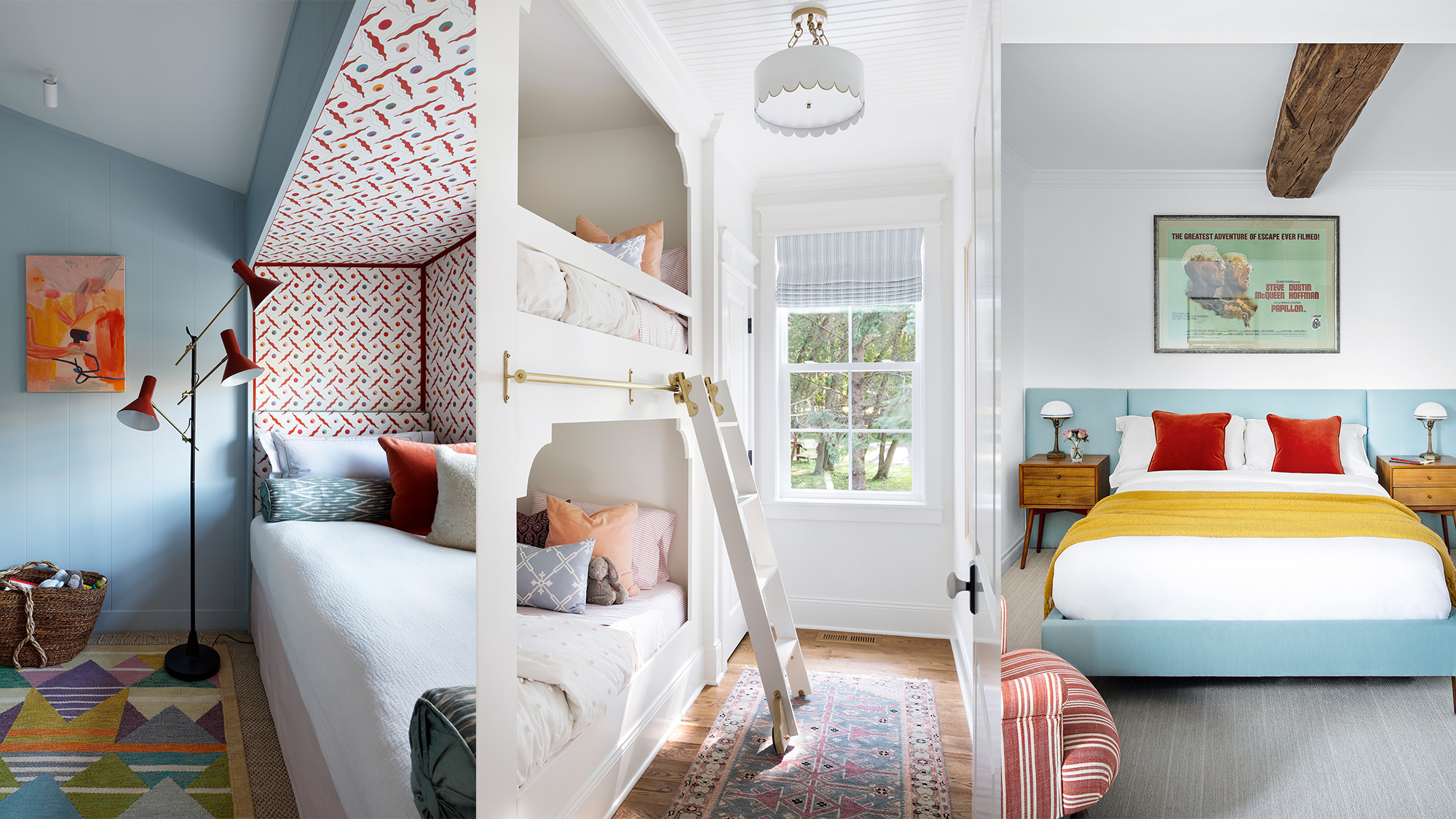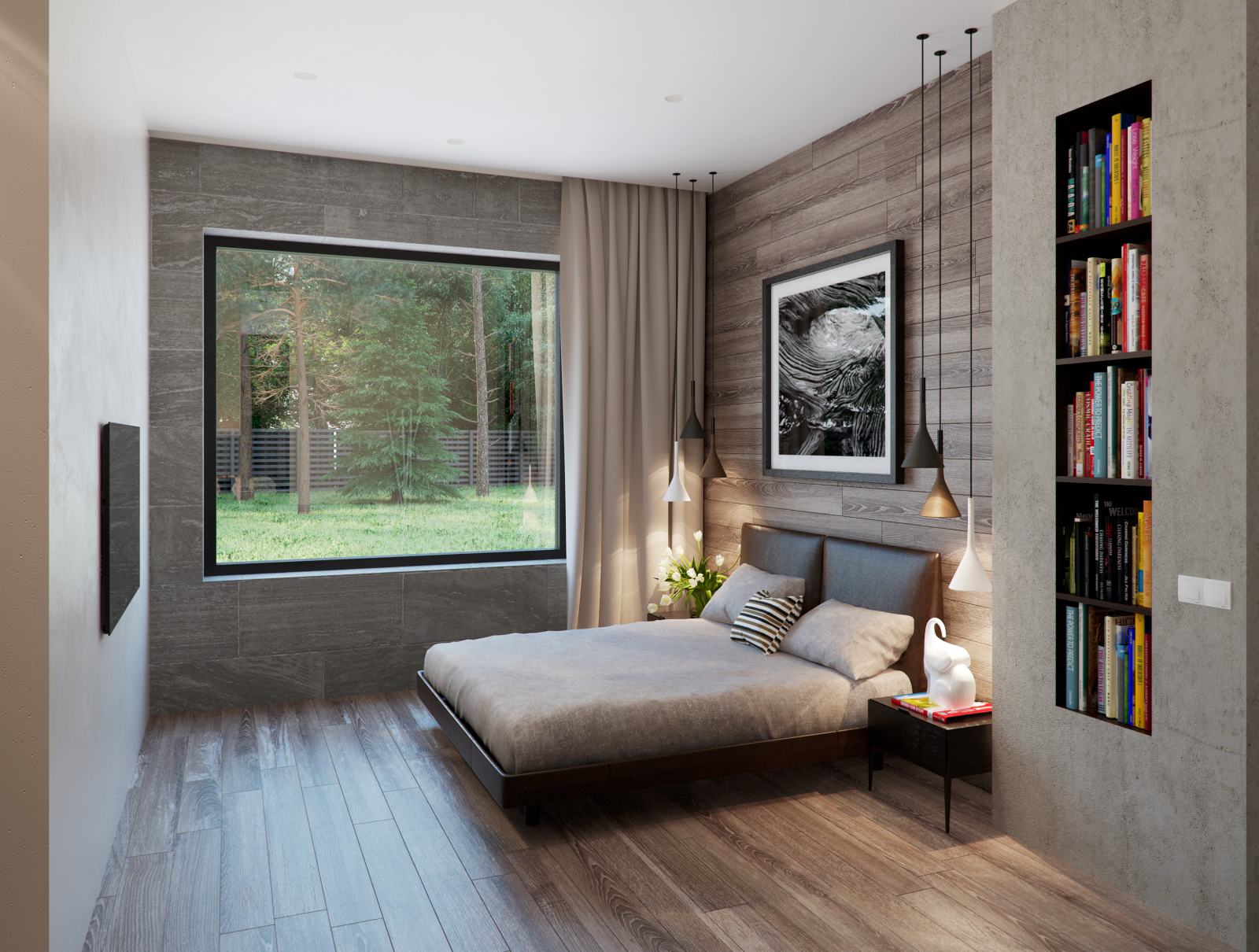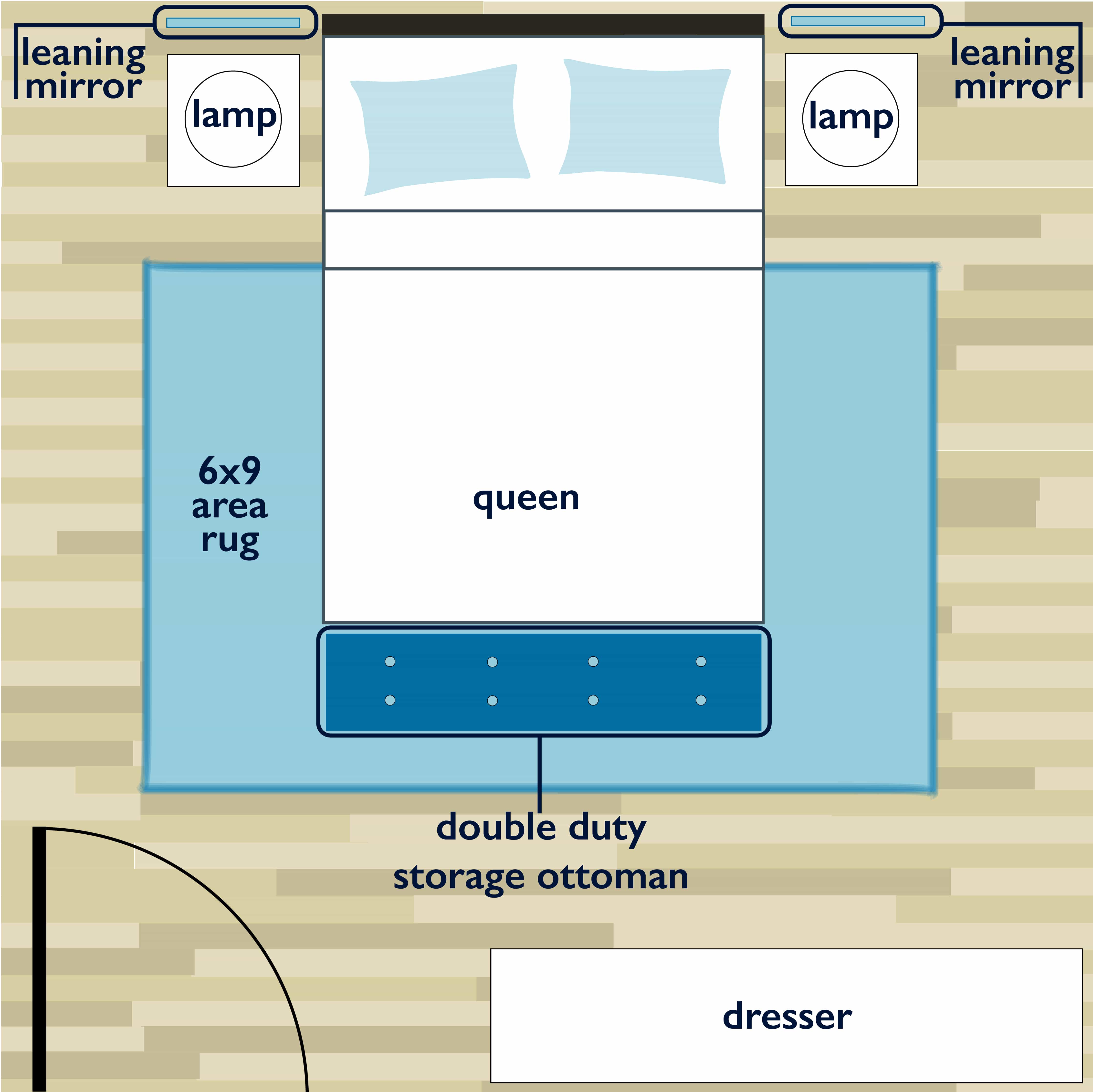Maximizing Space in a Small Bedroom: How To Layout A Small Bedroom

A small bedroom can be a challenge to design, but with smart planning and creative solutions, you can make the most of every square inch. One of the most important aspects of maximizing space is decluttering and minimizing possessions.
Decluttering and Minimizing Possessions
The first step to maximizing space in a small bedroom is to declutter and minimize possessions. This can be a daunting task, but it’s essential for creating a sense of spaciousness and order. Start by going through your belongings and getting rid of anything you don’t need or use. Donate items in good condition to charity, sell items you no longer need, or consider throwing away items that are no longer useful.
Utilizing Vertical Space
Vertical space is often overlooked in small bedrooms, but it’s a valuable resource. By utilizing vertical space, you can free up floor space and create a more organized and spacious feel.
Shelves
Shelves are a great way to store items without taking up valuable floor space. You can install shelves above your bed, desk, or dresser to store books, clothes, and other belongings. Consider using floating shelves for a minimalist look.
Storage Beds
Storage beds are another great way to utilize vertical space. These beds have built-in storage compartments underneath the mattress, which can be used to store bedding, seasonal clothing, or other items.
Wall-Mounted Organizers
Wall-mounted organizers can help you keep your belongings tidy and organized. They can be used to store everything from jewelry and accessories to toiletries and cleaning supplies.
Multi-Purpose Furniture
Multi-purpose furniture is a great way to save space in a small bedroom. By choosing furniture that serves multiple purposes, you can reduce the number of individual pieces you need and create a more streamlined look.
Bed with Built-in Storage
A bed with built-in storage is a great example of multi-purpose furniture. It provides a place to sleep and also offers storage space for bedding, clothes, or other items.
Fold-Away Desk
A fold-away desk is another great option for small bedrooms. When not in use, it can be folded away to free up floor space.
Creating a Sense of Spaciousness
There are a few simple design tricks you can use to create a sense of spaciousness in a small bedroom.
Light Colors
Light colors, such as white, cream, and light gray, can make a room feel larger. They reflect light, creating a sense of openness.
Mirrors
Mirrors can create the illusion of more space by reflecting light and making a room appear larger. Place a mirror on a wall opposite a window to reflect natural light.
Strategically Placed Lighting
Good lighting is essential for creating a spacious feel. Use a combination of ambient lighting, such as overhead lights, and task lighting, such as lamps and sconces.
Creating a Functional Layout

A well-designed layout in a small bedroom is crucial for maximizing space and creating a comfortable and functional environment. A clear flow of movement within the bedroom ensures easy access to all areas, making daily routines smoother and more enjoyable.
Different Layout Options
The choice of layout depends on the size and shape of the room, as well as personal preferences and needs. Here are some common layout options for small bedrooms:
- Single Bed Layout: This layout is ideal for single occupants or those who prefer a minimalist approach. It typically features a single bed positioned against a wall, leaving ample floor space for other furniture pieces, such as a dresser, desk, or chair.
- Twin Bed Layout: This layout is suitable for sharing a room or creating a cozy reading nook. Two twin beds can be placed side-by-side against a wall or positioned perpendicular to each other, depending on the room’s dimensions.
- Murphy Bed Layout: A Murphy bed is a space-saving solution that folds away into a wall cabinet when not in use. This layout allows for a multi-functional space that can be used as a home office, study area, or guest room during the day and transformed into a bedroom at night.
Maximizing Corner and Awkward Spaces
Corners and awkward spaces often go unused in small bedrooms. Utilizing these areas effectively can significantly enhance the functionality and storage capacity of the room.
- Corner Shelving: Corner shelves provide vertical storage solutions for books, decor, or other items. They can be freestanding or mounted to the wall, depending on the available space.
- Built-in Cabinets: Custom-built cabinets can be designed to fit seamlessly into awkward spaces, such as under the stairs or in alcoves. They provide ample storage for clothes, linens, or other belongings.
- Floating Nightstands: Floating nightstands, which are mounted to the wall, are a great option for small bedrooms as they minimize floor space. They can be used to store bedside essentials and create a minimalist aesthetic.
Sample Layout Design
Here’s a sample layout for a small bedroom measuring 10 feet by 12 feet:
- Bed: A queen-sized bed (60 inches by 80 inches) is positioned against the longest wall, leaving approximately 3 feet of space on either side for bedside tables.
- Nightstands: Two small nightstands (18 inches by 18 inches) are placed on either side of the bed, providing storage and surface space for lamps and other essentials.
- Dresser: A dresser (36 inches by 18 inches) is placed against the opposite wall, leaving enough space for a chair or a small desk.
- Desk: A small desk (48 inches by 24 inches) is positioned in a corner of the room, providing a dedicated workspace for studying or working.
- Storage: A tall bookshelf (36 inches by 12 inches) is placed in the remaining corner, offering vertical storage for books, clothes, or other belongings.
Adding Style and Functionality

Transforming a small bedroom into a haven of both style and functionality is achievable through thoughtful design choices. By incorporating color, patterns, and textures, you can create a cohesive and inviting atmosphere, while the right lighting enhances the mood and functionality of the space. Strategic furniture selection and personalized touches further contribute to a unique and comfortable retreat.
Color, Patterns, and Textures
Color plays a crucial role in setting the tone and ambiance of a space. In a small bedroom, light and airy colors like whites, creams, and pastels can visually expand the room and create a sense of spaciousness. For a more dramatic effect, consider using a bolder accent color on a single wall or through furniture pieces.
Patterns and textures add depth and interest to a small bedroom. Stripes, geometric patterns, and floral prints can create visual intrigue, while textures like linen, velvet, and faux fur add tactile appeal. When incorporating patterns, it is important to maintain a balance to avoid overwhelming the space.
Lighting
Proper lighting is essential for both the functionality and ambiance of a small bedroom. Natural light should be maximized by keeping windows unobstructed. Artificial lighting should be layered to create a variety of moods. A central ceiling fixture provides general illumination, while bedside lamps offer task lighting for reading or working.
- Consider using dimmable light bulbs to adjust the brightness level based on the time of day or activity.
- String lights or fairy lights can add a touch of whimsy and create a cozy atmosphere.
Furniture Selection
Furniture selection in a small bedroom is all about maximizing space and functionality. Choose pieces that serve multiple purposes and have a streamlined design.
- A bed frame with built-in storage drawers or a headboard with shelves can help keep belongings organized.
- A small, multi-functional desk or a wall-mounted fold-down table can provide a workspace without taking up valuable floor space.
- A compact, multi-tiered shelving unit can hold books, decorative items, and personal belongings.
- A storage ottoman can serve as both seating and storage.
Incorporating Personal Touches, How to layout a small bedroom
Personal touches make a bedroom feel truly unique and comfortable. Adding artwork, photos, plants, throws, and decorative pillows can reflect your personality and create a welcoming atmosphere.
- A gallery wall of framed artwork or photographs can add visual interest and personalize the space.
- Houseplants can bring life and color to a small bedroom and improve air quality.
- Soft throws and decorative pillows can add comfort and texture to the bed.
How to layout a small bedroom – Maximizing space in a small bedroom requires clever planning. A well-placed mirror can visually expand the room, while a strategically chosen color palette can create a sense of calm and spaciousness. If you’re drawn to a cool and sophisticated look, consider a gray black and blue bedroom scheme, which can create a tranquil ambiance without overwhelming the space.
Remember, incorporating functional furniture that serves multiple purposes is key to making the most of a small bedroom’s limited square footage.
Maximizing space in a small bedroom requires clever solutions. One option is to utilize corners, often overlooked areas. White corner drawers can add storage and a touch of elegance while minimizing the visual impact on the room. By integrating such pieces into your layout, you can create a functional and stylish small bedroom that feels spacious and inviting.
